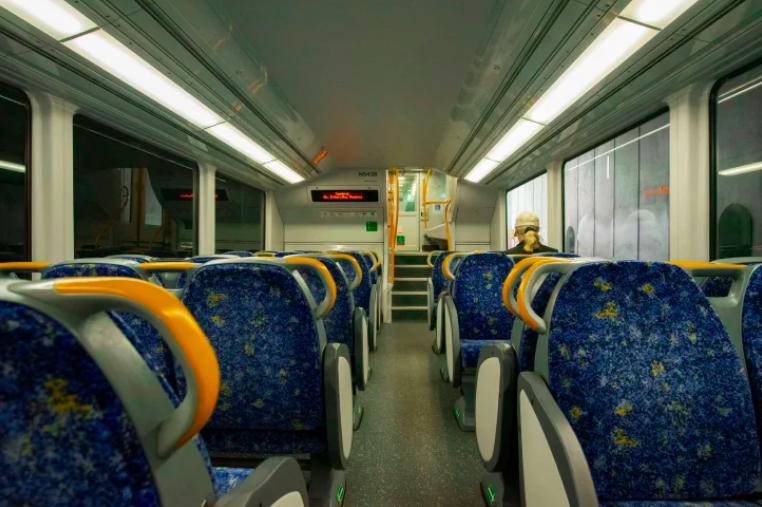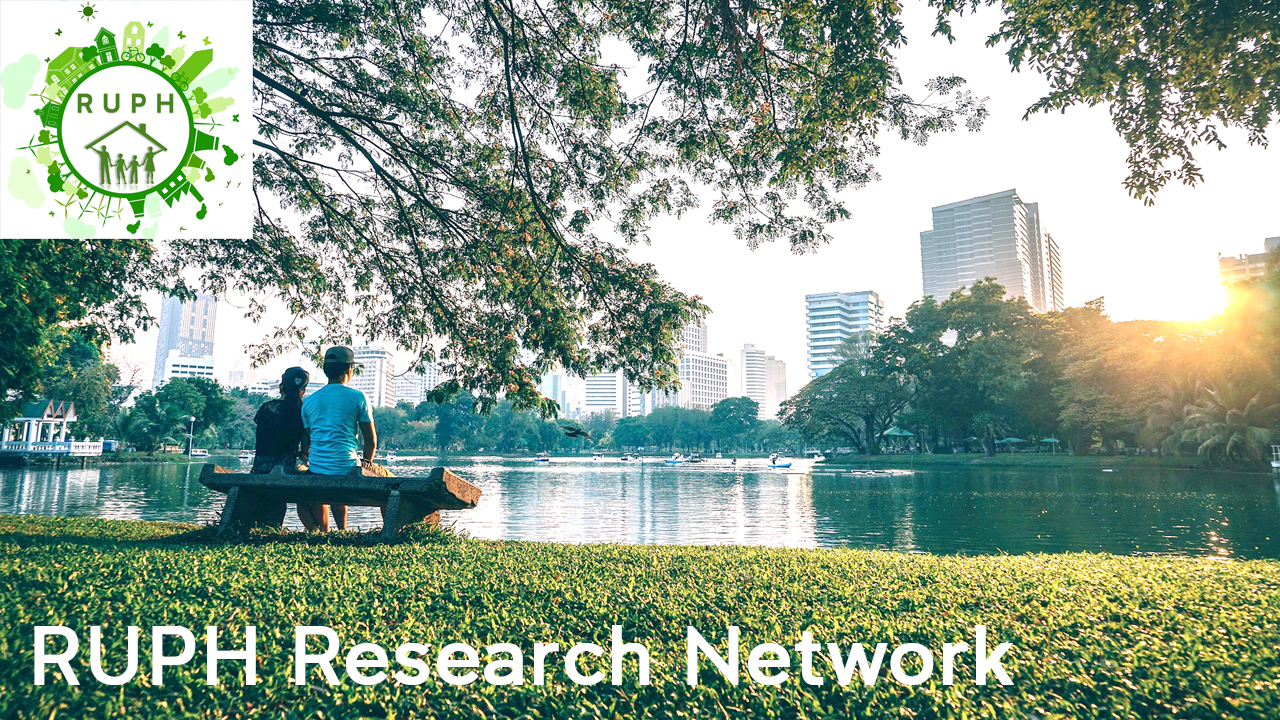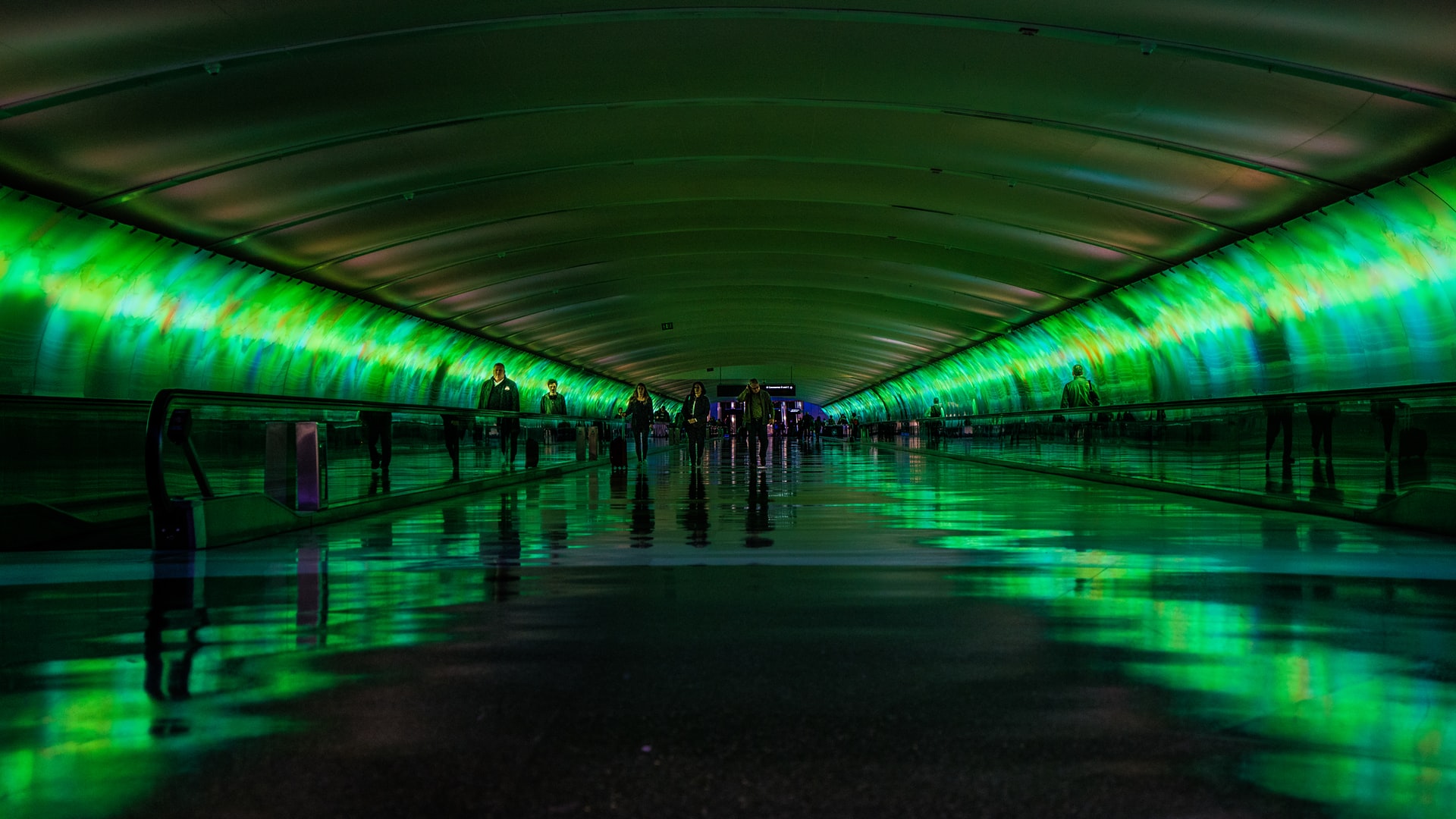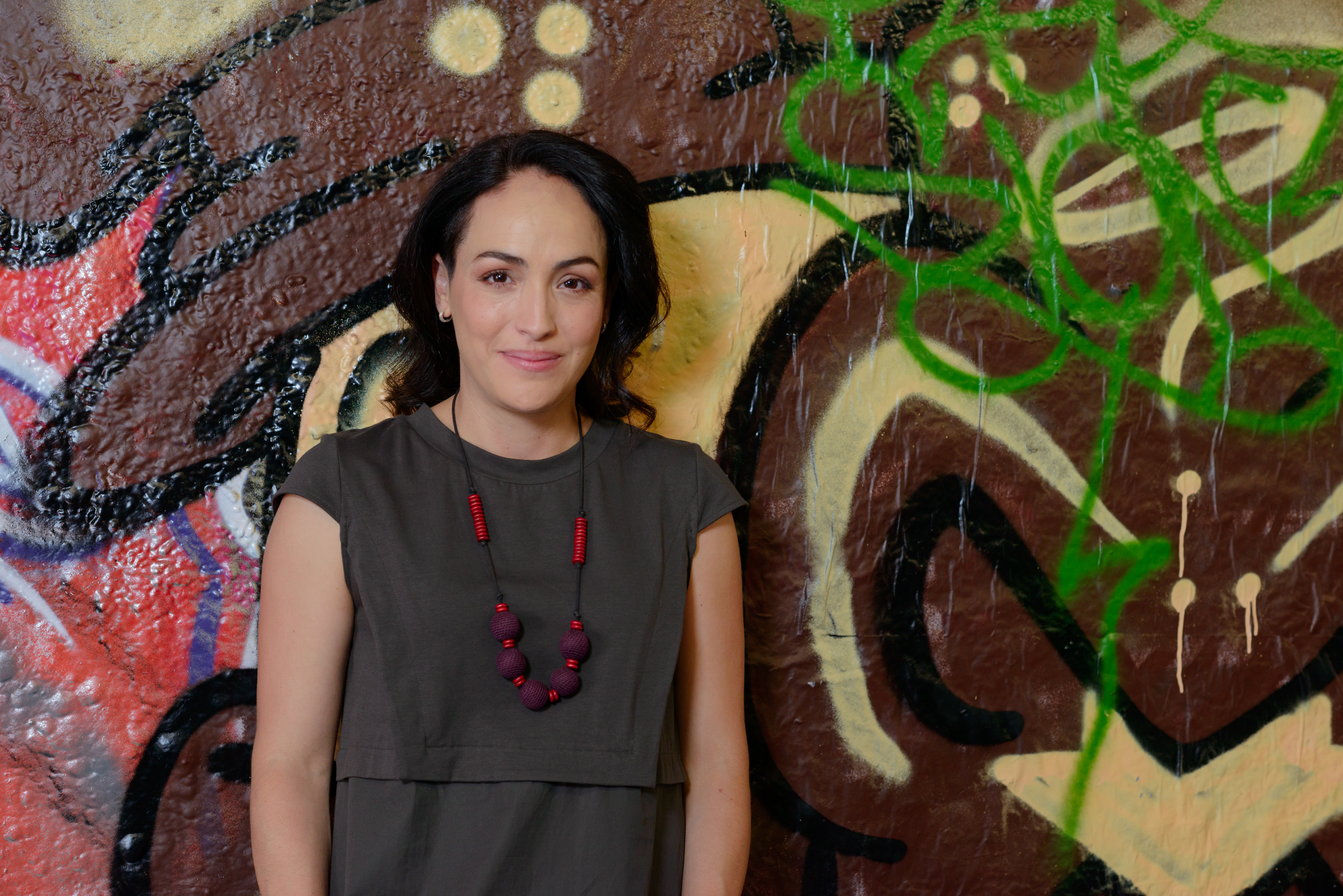A city of homebodies? How coronavirus will change Sydney

Two months ago, few people could have imagined Sydney would have fenced-off beaches, police patrolling parks, restaurants and cafes shut down, no rush hour and property rapidly falling in value.
Huge crowds gathered to watch the Sydney Gay and Lesbian Mardi Gras and danced until dawn at the after party on February 29 even as the COVID-19 pandemic ravaged South Korea and Italy and more cases were detected in Australia.
Dance parties and large public gatherings in the near future seem unimaginable as COVID-19, the disease caused by coronavirus, dramatically changes city life and turns Sydneysiders into homebodies.
The pandemic is no surprise to urban planners who owe their existence to public health concerns. “From the Great Fire of London to the bubonic plague outbreaks in the early 20th century in Sydney, advances in urban planning have their genesis in concerns about sanitation and public health,” said NSW Planning Minister Rob Stokes.
Stokes said the NSW government was already investigating how to enable better social distancing in the design of public open spaces such as wider footpaths, segregated cycleways and providing more linear parks. “Some elements of suburban sprawl may well have turned out to be a blessing in helping limit the spread of COVID-19,” he said.
COVID-19 has ravaged high-density cities such as Wuhan, where coronavirus was first detected, and New York - although other densely populated cities such as Singapore have not been so badly affected.
Chief executive of the Committee for Sydney Gabriel Metcalf said the competency of government and the healthcare system was more important than the density of a city. “I expect people will use this as a chance to attack density, but the reality is that cities like Singapore and Seoul are super dense and have done fine managing this pandemic – and many places that have no density are overwhelmed by it,” he said.
Dean of the School of Built Environment at Western Sydney University Kerry London said the way cities and buildings are designed will be “fundamentally changed”.
“There will be greater emphasis on individual building design and place design, including liveability concepts such as health and wellbeing, community living, use of internet technologies, precinct planning, gardens and outdoor space,” she said.
Stokes said shops, cafes, commercial and even light industrial businesses needed to be able to operate much closer to one another rather than being segregated. “While it’s too early to tell, clearly the pandemic will have lasting impacts on how we move around the city,” he said. “My prediction is that the concentrated peaks are likely to become more spread out, which will help to relieve congestion.”
Working from home
The pandemic has sparked a dramatic increase in the number of people working from home -although that option is skewed towards higher income earners.
“People have got back time in their lives through ‘commuting upstairs to their home office,” London said. “It has shown us a whole new way of working that allows us a greater measure of control if we are smart about it.”
Sydney lord mayor Clover Moore said she imagined many people would continue to work from home once the crisis passes. “This will free up space on our roads and crowded public transport,” she said. “Public transport ridership and the congested traffic will return to Sydney, but hopefully as many people have experienced just how easy and enjoyable walking and riding to work is during this period, they’ll choose to stick to it.”
Moore said air pollution in many big cities had plummeted as a result of lockdowns. “When the crisis passes we will have the opportunity to consider the importance of clean air and blue skies as governments switch back to 21st century economic activity,” she said.
In contrast, David Sanderson, the Judith Neilson chair in Architecture at the University of NSW, said health crises had afflicted cities without causing lasting change. “Look at deaths caused by the flu and other communicable diseases,” he said. “They have had little impact.”
But Sanderson said he hoped one lasting effect of the coronavirus pandemic was a reduction in commuting times as more people worked from home. “I don’t think people will forget how awful commuting is,” he said. “It would be astonishing if it doesn’t have some impact on middle-class people who can afford to work from home.”
Professor of transport engineering at the University of Sydney David Levinson said public transport services may be cut because more people work at home or are reluctant to board buses and trains. “Constructing protected lanes for bikes, e-bikes, scooters is likely to be accelerated to help serve the markets that were previously served by public transport,” he said.
From healthcare to supermarkets, the frontline of the coronavirus pandemic is predominantly staffed by women in jobs that are neither highly paid nor secure.
Rae Cooper, professor of gender, work and employment relations at the University of Sydney, said she hoped the health crisis prompted reflection on how workers are treated in these sectors and how they are valued. “This crisis absolutely demonstrates that highly feminised sectors are absolutely socially and economically valuable,” she said. “Keeping people alive, fed, educated and looked after is what should be valued.”
Cooper also said a greater embrace of working from home would “open doors” for more people with caring responsibilities, who are overwhelmingly women, to participate in the labor force.
Staying at home
Prashan Karunaratne, a lecturer at Macquarie Business School, said lifestyle changes sparked by coronavirus may last long after restrictions are lifted and the economic downturn has reversed. “All of this could have a permanent impact on the vibrancy of Sydney as a city as we spend more of our time at home compared to pre-COVID-19 – eating out may be substituted by gatherings in homes, going out for a movie may be substituted by watching Netflix or DisneyPlus,” he said. “This could translate to a reduction in the vibrancy of nightlife on Oxford Street or at the Star.”
The NSW government’s lockout laws, which were partially lifted in January, transferred some nightlife to Newtown and Parramatta, Karunaratne said. “As current lockdown laws begin to be eased, we could see this trend repeat, transferring the vibrancy of nightlife in Oxford Street to more local hubs around the inner west and greater Sydney.”
Levinson said consumers were also becoming more accustomed to delivery: “This returns in many ways to how life was 100 years ago, when delivery and door-to-door sales were much more common.”
Chair of urbanism at the University of Sydney Nicole Gurran said local shopping strips could also benefit if more people work from home and shun places where crowds congregate. "I think the big change is the importance of neighbourhood shops, the old corner store will probably see a big revival," she said. "The little neighbourhood strip where there might be a coffee shop and you still get a takeaway and shop locally."
Nicky Morrison, professor of planning at Western Sydney University, said there was a strong case to "pandemic-proof" public buildings and retrofit health measures. "It is likely to become the new social norm to expect temperature gauges, hand sanitisers, physical distancing at all our key anchor institutions," she said.
Metcalf, from the Committee for Sydney, said Sydneysiders could also adopt the hygienic practices common in large Asian cities such as wearing face masks. “If the virus persists I would expect to see a lot of redesign of buildings too – getting people through airport security without crowding, or up an elevator without pushing buttons, things like that,” Metcalf said. “But there are some things that are inherently crowded – like going to a concert. People may be reluctant to do those mass gatherings until they feel like the virus is not in circulation.”
People power
Nick Parr, a demography expert at Macquarie University, said he expected Sydney’s population growth to slow in the short-term due to fewer international arrivals and a reduction in the birth rate, but would continue its trajectory towards 8 million people by 2056. “I would expect to see planning for further increase in population density in existing suburbs, as well as new greenfield development around Sydney's perimeter," he said.
Parr said any effect of working from home on the birth rate would probably be “only slight”.
“The international evidence suggests economic recessions are associated with small and mostly temporary reductions in birth rates,” he said. “The COVID-19 emergency is also reported to have led to the postponement of IVF treatments.”
Higher education is one of the hardest hit sectors, with the University of Sydney forecasting a $470 million loss this year due to a 17 per cent drop in international students, fewer than expected domestic students and the extra cost of online teaching.
Parr said he did not believe the downturn in foreign students studying in Australia would be long lasting. “All around the world rates of completion of secondary school and university degrees have been increasing, especially in parts of Asia and among females,” he said.
The federal government revealed plans last week to introduce a mobile phone app to track people with coronavirus - a measure already used in Singapore - while WA police were given powers to use electronic ankle bracelets to monitor people in quarantine.
Annelies Moens, the managing director of business consultancy Privcore, suggested civil liberties were at risk through increased surveillance even after the pandemic abates: “Once emergency powers are in place, they are not easy to remove and societies can quickly slip into police states.”
Cash has traditionally been king, but retailers such as Harris Farm Markets have limited cash payments in a bid to contain the spread of the coronavirus. Digital payment systems might spare cashiers from handling “virus-laden cash”, but customers are still exposed to the risk of virus and bacteria transfer, according to John Selby, a lecturer in the Department of Accounting and Corporate Governance at Macquarie University. “Typically, neither the screen interface or the keypad are sanitised between customer transactions.”
Reliance on technology for working, learning or medical consultations also risks deepening the digital divide for Sydneysiders who lack access to laptops, tablets and high-speed internet at home, Selby said. “A purely digital currency would tend to exclude the poorest Australians from access due to their inability to afford devices capable of making digital payments.”
Western Sydney University's Morrison said the coronavirus pandemic had accelerated history, with processes that usually take years occurring in days.
The true value of ordinary aspects of city life - such as the freedom to move around the city and gather at a park or cafe - were truly appreciated when they were denied.
“And yes, there is also concern that the power of new surveillance technologies are being nodded through whereas in the past, governments would have agonised and debated over human rights and privacy,” she said.
This article was authored by Andrew Taylor for the Sydney Morning Herald. Read the original article here.



